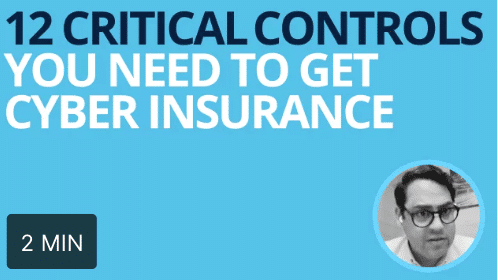The content of this blog post comes from our webinar that you can watch here.
Ransomware is an increasingly popular and dangerous threat to businesses and organizations around the world. As cybercriminals continue to advance their techniques, it’s up to businesses and IT professionals to do what they can to stop and mitigate attacks.
The Security Landscape
There were more than 300 million ransomware attempts in the first half of 2021 alone. Since then, the number of ransomware attacks have only increased, and the resulting damage has been extremely costly.
The current cybersecurity threat landscape for businesses and organizations is complex, with a wide variety of threats to consider. Without cybersecurity experts or even basic cyber hygiene practices, many organizations leave themselves vulnerable as easy victims for cyberattacks such as ransomware and phishing.
When Ransomware Strikes
Ransomware is a type of malware that encrypts a victim’s files and demands a ransom be paid in order to decrypt them. Once ransomware has encrypted a file, the only way to get the data back is through decryption, which can only be done with a special key.
Ransomware attacks can happen to any business or organization, no matter how big or small. In fact, smaller businesses are often targeted because they may not have the same level of security as larger organizations.
Once an organization has been owned by a ransomware attack, there’s little they can do to mitigate the loss unless they had previous protection measures in place such as a secure data backup. Additionally, even if a backup exists, the process of restoring data can be time-consuming and expensive.
The Importance of Managed Backups
In the event of a ransomware attack, having a secure backup is critical to mitigating loss. Backups should be stored offline and not connected to the network in order to prevent them from being encrypted by ransomware. Additionally, it’s important to have multiple backups in different locations in case one is lost or destroyed. As an ISG Backup client, we follow the best practice of a 3-2-1 solution. This means our team creates 3 copies of your data, in 2 different media formats, with 1 of those off-site.
The Remediation Process
Once a ransomware attack has occurred, the first step is to contain the spread of the malware. This can be done by disconnecting any infected devices from the network and taking them offline. Once the infection has been contained, the next step is to start the process of cleaning and rebuilding any infected systems.
Payments, Prevention, and Preparation
There are a few things businesses and organizations can do to prevent themselves from being targeted by ransomware attacks. The first is to have proper cybersecurity measures in places, such as firewalls, anti-virus software, and email filtering. Additionally, it’s important to educate employees on cybersecurity best practices and have an incident response plan in place in the event of an attack.
For a thorough list of the controls, you should have in place, check this clip that speaks to the 12 Critical Controls Cyber Insurance providers are now required to qualify for cyber insurance.

In the event that an organization is targeted by a ransomware attack, it’s important to not give in to the attacker’s demands. Paying a ransom only incentivizes cybercriminals to continue their attacks and doesn’t guarantee that files will be decrypted.
The best way to prepare for a ransomware attack is to have a comprehensive backup and disaster recovery plan in place. This will ensure that in the event of an attack, data can be quickly restored and business reducing the amount of downtime allowing business to continue as usual.
Partnering With ISG Tech Mitigates Ransomware Risk
Ransomware attacks are becoming more and more common, and they can happen to any size business or organization within any industry. In order to protect yourself, it’s important to have proper cybersecurity measures in place and to educate employees on best practices. Additionally, having a secure backup is critical in the event of an attack.
If you do find yourself the victim of a ransomware attack, the best course of action is to not give in to the attacker’s demands and reach out to cybersecurity professionals such as ISG Technology. By partnering with a managed service provider for IT security you are increasing your cybersecurity posture, give us a call today or visit our contact us page here to schedule a call with a security expert today.
